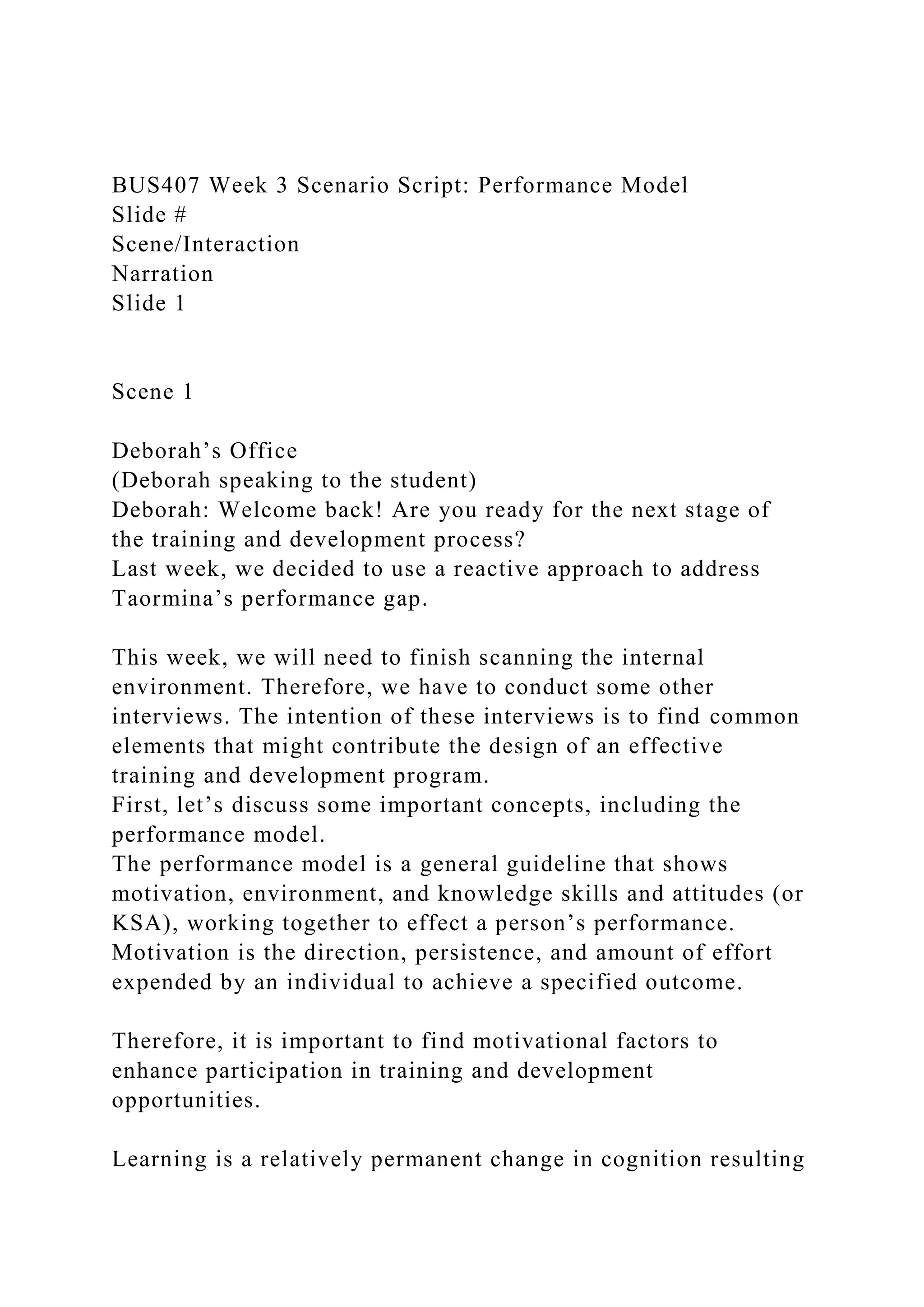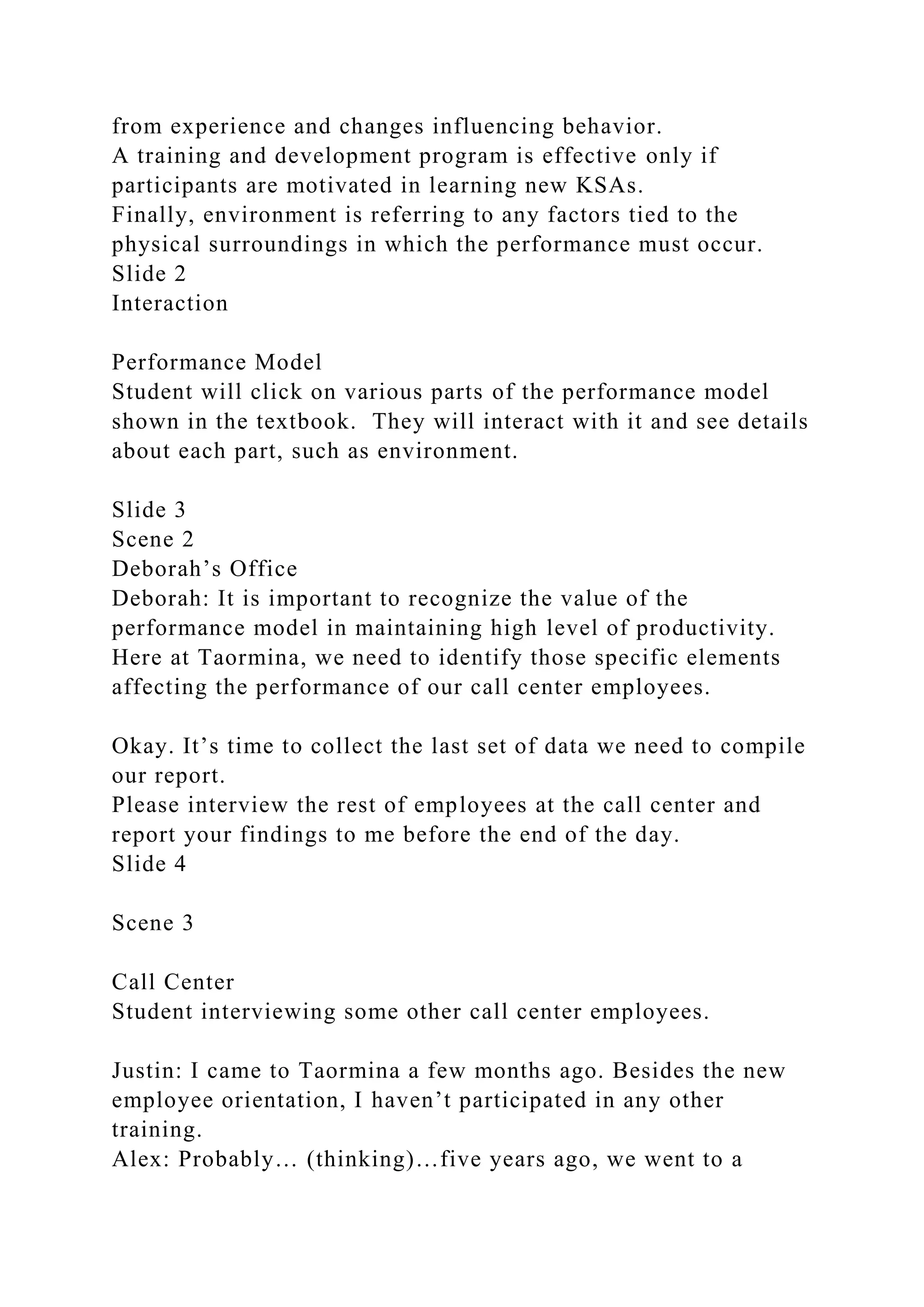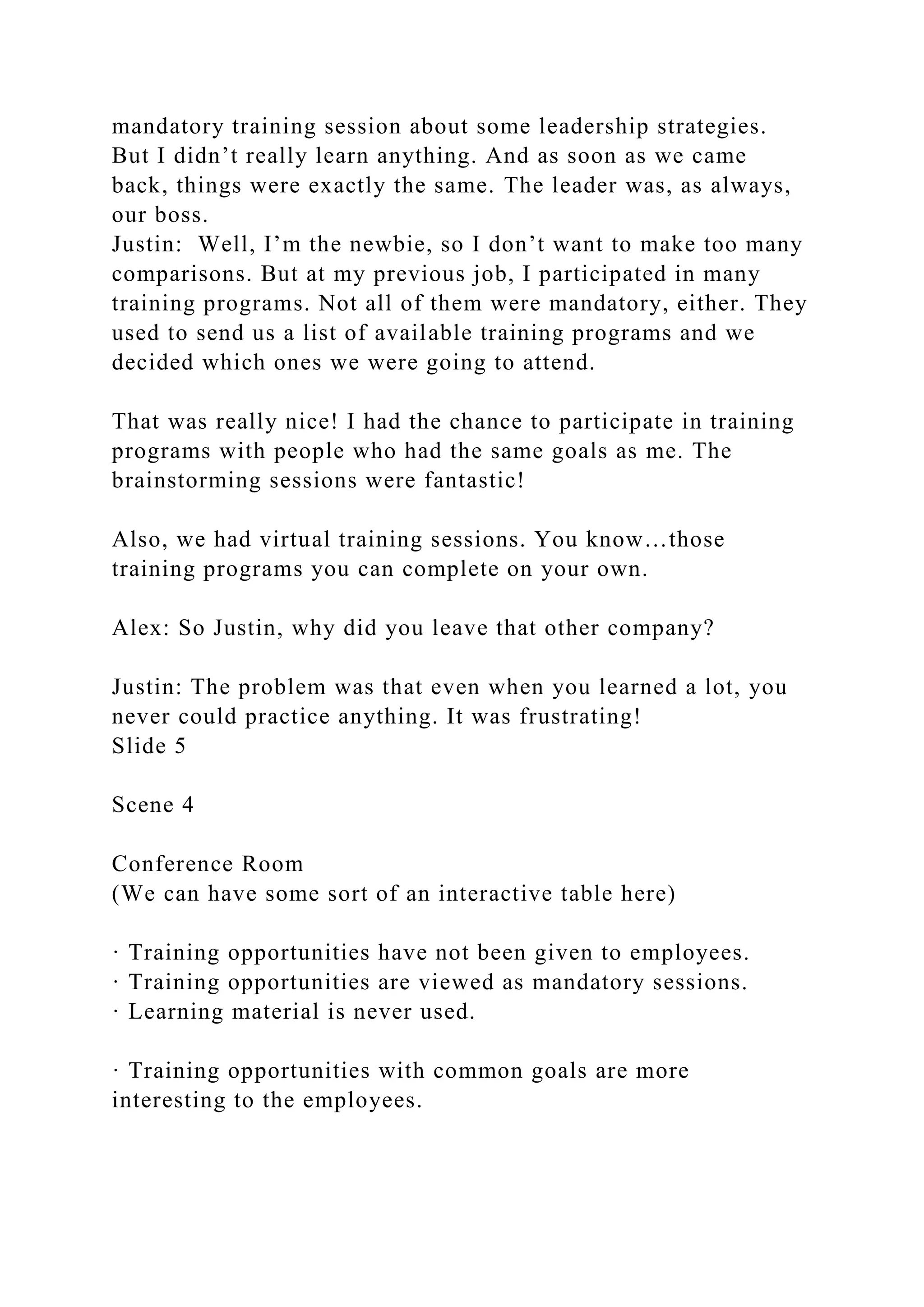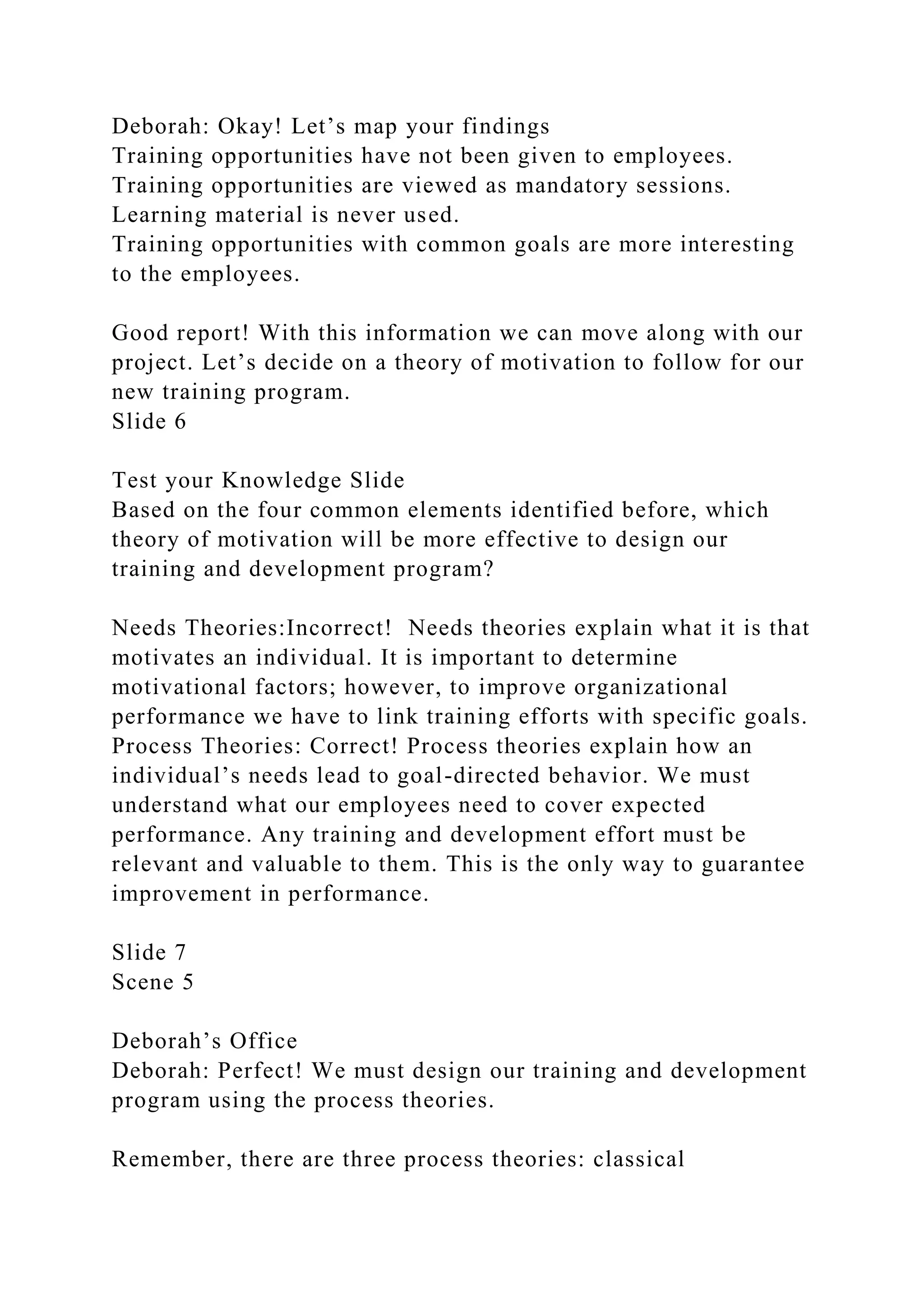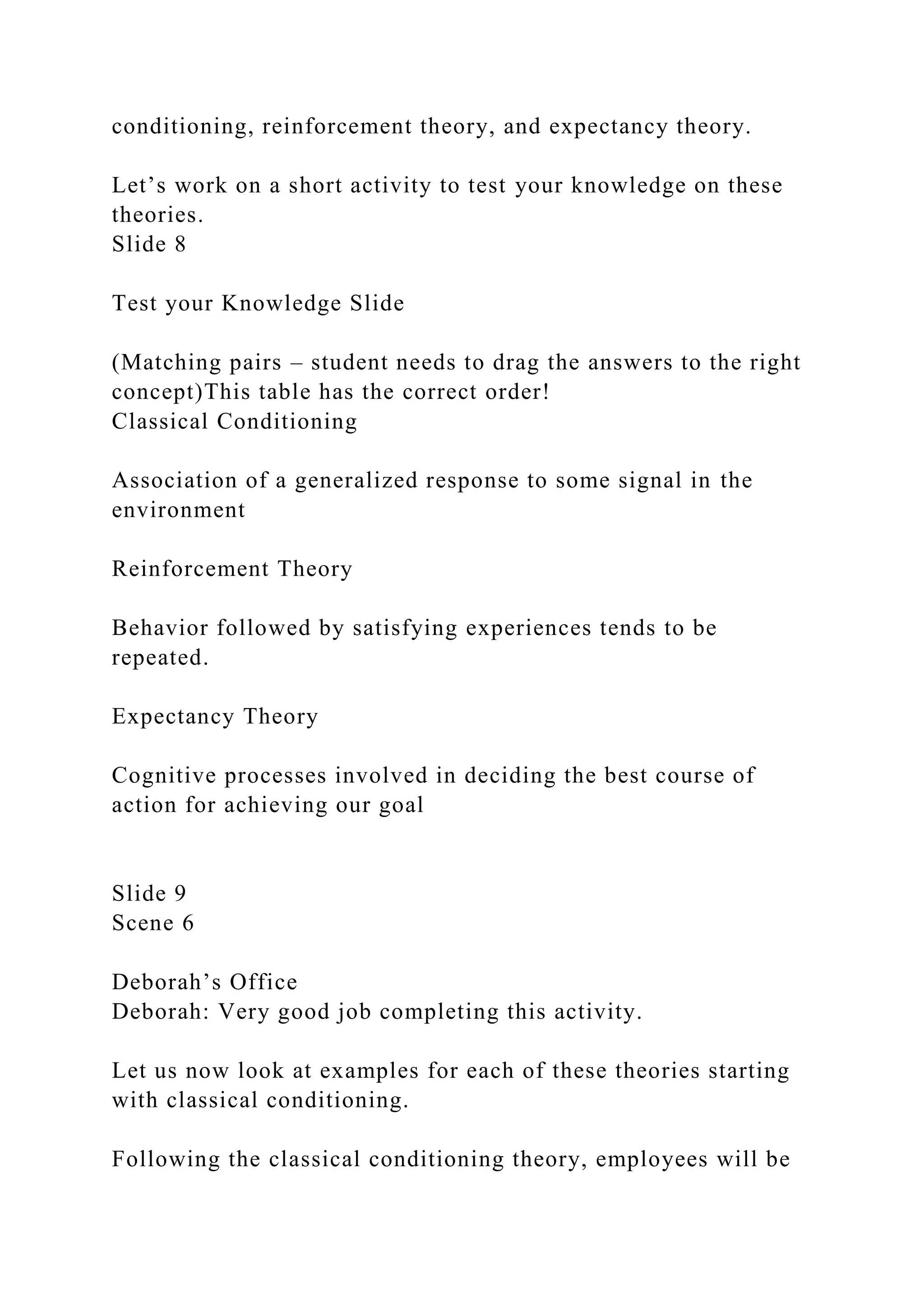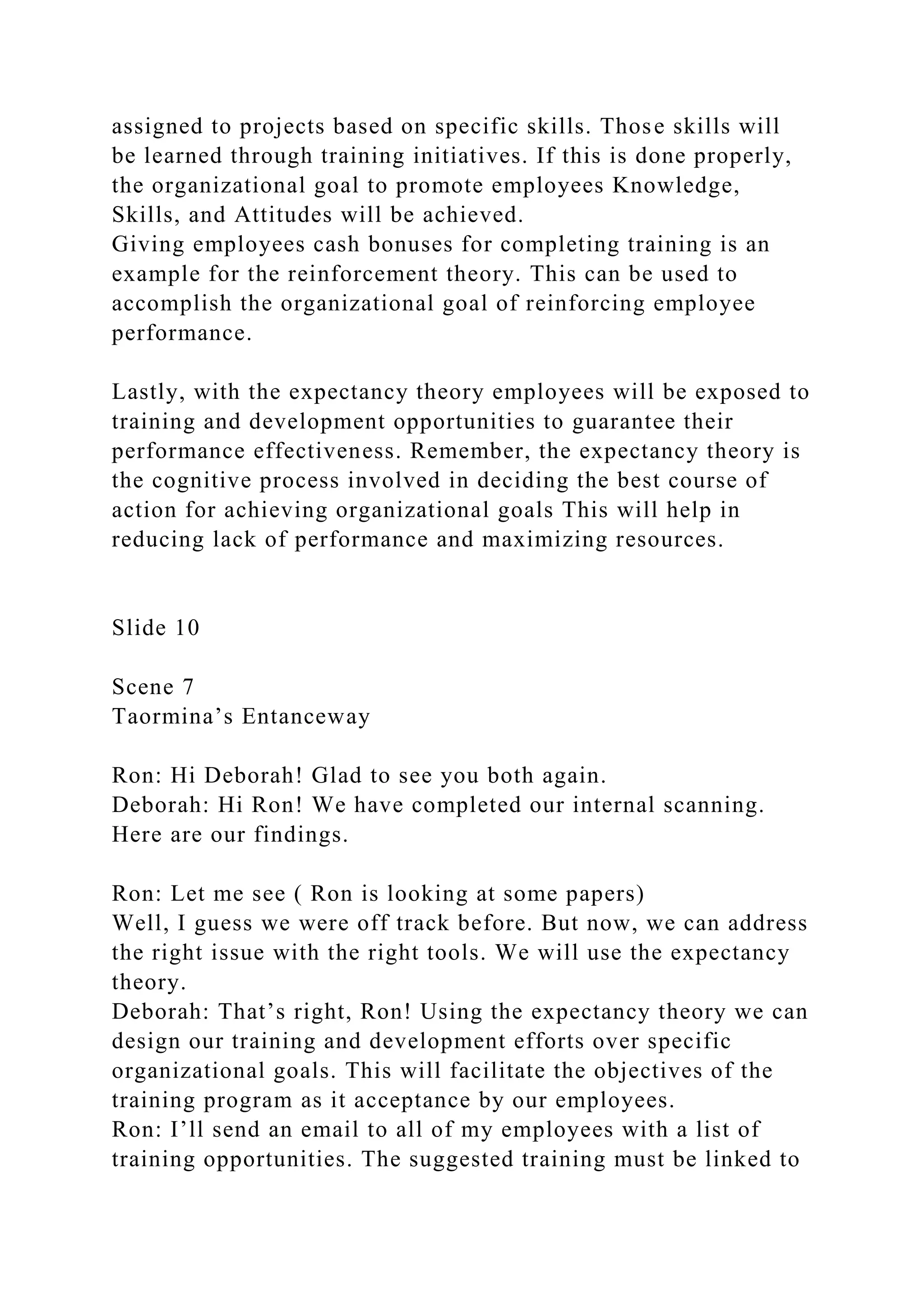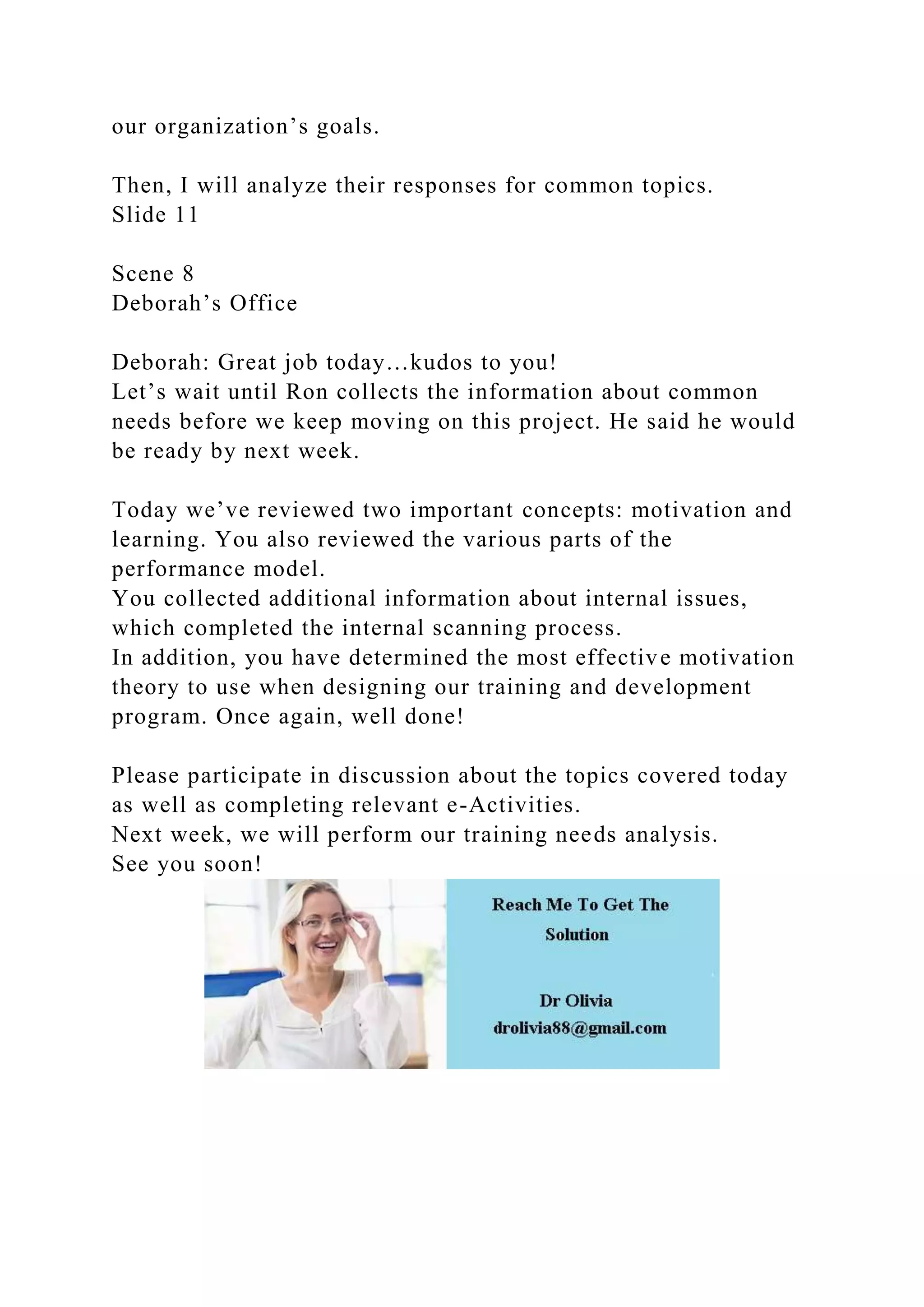The document outlines the training and development process at Taormina, led by Deborah, who emphasizes the importance of understanding the performance model that includes motivation, environment, and knowledge, skills, and attitudes (KSA). During interviews with call center employees, it is revealed that training opportunities are seen as mandatory and ineffective, highlighting the need for training aligned with common goals to enhance employee participation. The focus shifts towards using process theories to design an effective training program that connects employee needs with organizational goals.
